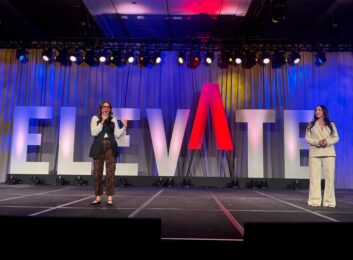When the world began staging hybrid and virtual events at the start of the COVID-19 pandemic, it did so out of necessity. In making the shift, many organizations found new, powerful platforms for engaging with their current audience and reaching new ones. Now that the world has staged virtual events for the better part of a year, it’s time to make sure these events meet your organization’s ongoing needs.
In the era of pandemic-inspired austerity, many companies are weighing their spending priorities. However, reducing budgets for events and conferences may be short-sighted. The process to develop a budget for a virtual or hybrid meeting isn’t too dissimilar to traditional in-person meetings, but it requires looking through a different lens.

Create Your Realistic Agenda Based on Goals
The first step of budgeting a hybrid meeting doesn’t require a calculator. This is the time for organizers to set realistic, measurable goals for their gathering. Think about the event from an attendee’s perspective. Ask questions such as: How will participants interact with content, and what would they want to take away from the event?
See also: 5 Tips to Write an Effective Script for a Virtual Event
From there, you can start the process of choosing a solution and begin to calculate your budget.
Tabulate Technology Costs
Understanding the metrics and a proposed agenda is the first step toward choosing the right platform to deliver your ideal hybrid event. But budgeting for technology to stage an event virtually is more than just the software solution.
It may also include the cost of buying or renting cameras and audio equipment to capture pristine sound. Additionally, consider the cost of creating content in advance of an event. While this may require some additional front-end budget, it could provide savings later.
A hybrid or virtual event should never be about using technology for the sake of technology. Just because a platform can meet one need doesn’t make it suitable for an organization’s entire event. It’s all about choosing a platform that meets the overarching objective.
The Support Staff Line Item
While virtual and hybrid events may require less on-site help, they call for a different staffing model. Virtual and hybrid events must serve as an extension of a brand, and therefore, they must be well-planned and professionally executed.
As a starting point, staffing models must include trained camera operators who know how to capture moments in a compelling way. Additionally, consider hiring content creators to develop social media and web content to bring the event to a broader audience.
Then, think about the event from an attendee’s perspective. How would they want to engage another human? What staffing is needed to make that level of a human touch possible?
Hidden Costs
Aside from the virtual elements of staging an event, post-pandemic events still have on-site costs. For example, a hybrid event may require a sizeable space, allowing for proper social distancing for attendees who choose to join in person.
More: How Will Hybrid Meetings Hit 2021 Budgets?
Additionally, a fully virtual event may require a filming location to ensure it meets an organization’s desired aesthetic.
Last but not least, consider those speaking at the event. Will the speakers be paid for their participation, and will they require a travel budget?
Success Measures
Virtual and hybrid events provide an excellent opportunity to measure metrics in ways in-person meetings do not. Attendee surveys, polls and chat forums allow organizations to capture valuable specific feedback. They allow organizations to tailor their content for an event in advance or even in real time.
Determining success requires clearly defined goals. Without these objectives, it is impossible to know whether efforts are successful. Developing goals must be hyper-targeted to an organization. It’s not enough to say, “we should increase attendance” or “we will grow sales.” That’s too vague.
Instead, think about how you can reach your audience and inspire them to take action. In the era of Covid, organizations must look at personal interactions differently, and they must be prepared to extend the time it takes to build and nurture a relationship.
Even at the pandemic’s peak, people wanted a connection, and they still do. Brands have the opportunity to give them one through reimagined gatherings.
Lauren Weatherly is SVP of marketing of global virtual meetings and events company PGi.




